About Department
Vision & Mission
Objectives
The curriculum is designed to attain the following learning goals which students shall accomplish by the time of theirpost-graduation
- This programme will enable students to acquire knowledge on thein-depth aspects of the Microbiology, Immunology, Bioprocess Technology and Molecular Biology to enable them to understand emerging and advanced concept in modern biology and help them to take their career in thisfield.
- After completion of the programme, the students will be able to acquire the necessary theoretical and practical competencies in Microbiology to enable them to undertakegainfulself-employment.
- The Programme is intended to help the students to be the innovative and versatile personalities in the field of Life Science with quality education and provide the skilled manpower required by industeries.
Graduate Attributes
Skills and ApplicationsStudents should possess skills to apply theoretical knowledge to basic applications by developing hypothesis, design, and execution of experiments and analysis of results on an individual basis.
Research and innovation: Students should be independently able to formulate research projects through literature search, finding research gaps and framing objectives in order to strive for innovation.
Collaboration and cooperation: Students should be able to identify potential collaborators and know the art of cooperation in working for common goals.
Communication:Students must be able to communicate scientific ideas as well as their beyond curriculum effectively between peers and others through various modes of communication (verbal, written, presentation etc...)
Industry preparedness: Students must be skilled with necessary technical domains and possess basic whereabouts of related industry as a part of industrial preparedness.
Program Educational Outcomes
- PEO1: Research, Numeracy and scholarship: to inculcate scientific thinking, writing and application in light of sustainable goals
- PEO2: Practice, operation and usage of modern tools and technology:To equip the students with classical and modern tools for its application in thrust areas
- PEO3: Depth and breadth of knowledge:To build in depth clarity of reasoning in theoretical and practical knowledge
- PEO4: Professional capacity and love of learning: To develop professional capacity of students for its sustenance
- PEO5: Global, moral and aesthetic sustainability: To make students able to interpret principles of ethics for their social, economic and environmental responsibilities
Program Outcomes
- PO1: Scientific Knowledge: :In depth understanding of basic and applied aspects of microbiology
- PO2: Professional efficiency: Develop inclination towards own professional goals over a wide range of career options expanding from R&D, Industrial or Govt. sector or as an Entrepreneur
- PO3: Problem analysis:Ability to retrieve biological information through data mining and data handling
- PO4: Modern tool usage: Familiarized with latest and advanced tools and techniques of biological sciences.
- PO5: Team work: Capacity to develop, employ and integrate technical and professional skills as a member of a team withholding the essence of collaboration, cooperation and integrity.
- PO6: Design/development of solution:Analysis of scientific issues across the spectrum of related disciplines
- PO7: Conduct investigations: To independently be able to formulate research projects on microbiology and allied interdisciplinary or multidisciplinary fields through literature search, finding research gaps and framing objectives in order to strive for innovation
- PO8: Communication: Acquire skills specific to microbiology and allied fields for converting information to knowledge through hypothesis, design, execution and analysis
- PO9: Design/development of solution:Capability to contribute acquired knowledge leading to find a suitable solution for an existing problem
- PO10: Ethics:Uphold the responsibility as a global citizen maintaining professional and ethical values
- PO11: Environment and sustainability: Understand microbiology as a social endeavor in context to bringing about harmony with nature
- PO12: Lifelong learning: Ability to upgrade knowledge independently and act upon means of improvement for lifelong learning
Program Specific Outcomes
- In depth understanding of basic and applied aspects of microbiology
- Develop inclination towards own professional goals over a wide range of career options expanding from R&D, Industrial or Govt. sector or as an Entrepreneur
- Ability to retrieve biological information through data mining and data handling
- Familiarized with latest and advanced tools and techniques of biological sciences.
- Capacity to develop, employ and integrate technical and professional skills as a member of team withholding the essence of collaboration, cooperation and integrity.
- Analysis of scientific issues across the spectrum of related disciplines
- To independently be able to formulate research projects on microbiology and allied interdisciplinary or multidisciplinary fields through literature search, finding research gaps and framing objectives in order to strive for innovation
- Acquire skills specific to microbiology and allied fields for converting information to knowledge through hypothesis, design, execution and analysis
- Capability to contribute acquired knowledge leading to find a suitable solutions for an existing problem
- Uphold the responsibility as a global citizen maintaining professional and ethical values
- Understand microbiology as a social endeavour in context to bringing about harmony with nature
- Ability to upgrade knowledge independently and act upon means of improvement for lifelong learning
- PSO1:Attribute pathogenesis of diseases to virulence mechanisms, outline the pathogenesis, transmission and treatment of emerging bacterial and viral infections. Recognize the role of microbiome in the overall physiology of humans. Execute antibiotic susceptibility assays and evaluate efficacy in context of antibiotic resistance. Also, implement diagnostic tests for infectious diseases
- PSO2:Formulate a hypothesis, design a research project, execute the experiments including appropriate calibrations and controls, implement appropriate methods for data collection and analyze data with appropriate statistical tools. Abstract and paraphrase scientific information, extrapolate it and present it creatively in the appropriate scientific language for verbal and non-verbal communication, using ICT tools.
- PSO3:Understand, explain and monitor processes in industries with respect to regulatory aspects, QA, QC, GLP, ISO standards and validation. Check microbial quality of bulk and finished pharmaceutical products, judge their quality and maintain records. Apply concepts in bioinformatics, proteomics, high throughput screening and pharmacogenomics for discovering new drugs
- PSO4:Recall and apply various concepts in modern Biotechnology like gene therapy, stem cell technology, 16SrRNA sequencing in fields like diagnostics, therapeutics and genetic counselling. Summarize and evaluate the biotechnological potential of fungi and algae for production of commercial products like pharmaceutics, pigments, enzymes, biofuels etc. and in processes like bioremediation and wastewater treatment. Summarize and interpret the laws for IPR, biodiversity conservation and recall the perspectives of bioethics. Implement patent searches and outline prerequisites and steps in patentability.
Faculty profile
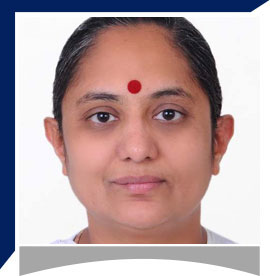
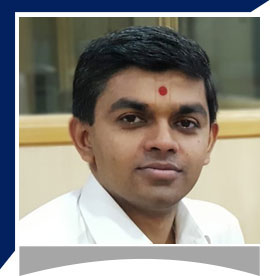
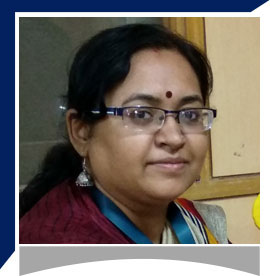
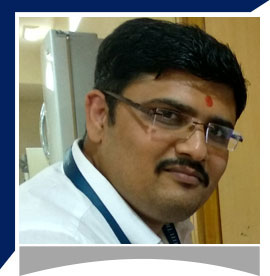
Dr. Abhijeet S. Joshi
Asso. Prof.
M.Sc. Ph.D., (NET, GATE Qualified)
Exp:12.5 years
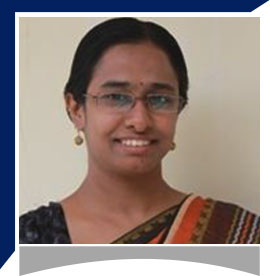
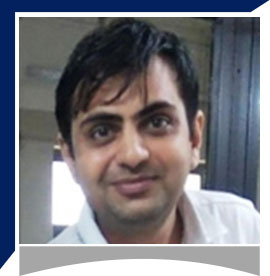
Dr. Rohan V. Pandya
Asst. Prof.
M.Sc.,M.Phil.,Ph.D.Post Doc.
Exp:13 years
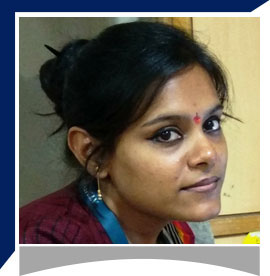
Dr. Chitra Bhattacharya
Asst. Prof.
M.Sc., DCA,M.Phil,Ph.D.
Exp:9.0 years
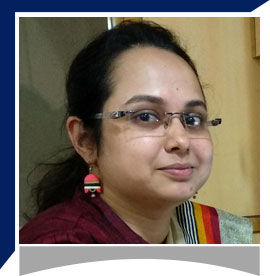
Ms. Nidhi Saxena
Asst. Prof.
M.Sc. Biotechnology, PhD Biotechnology (Pursuing)GSET
Exp:6 years
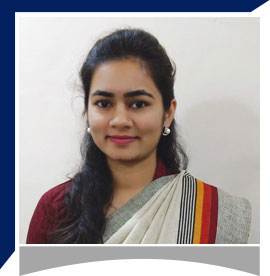
Ms. Dimple K. Kachhadiya
Teaching Assistant
M.Sc.Biotechnology,GSET
Exp:Teaching:-2.5 years
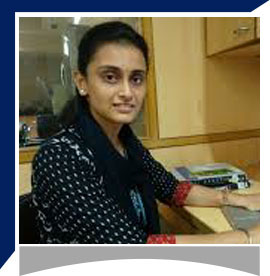
Ms. Shivani H. Tank
Teaching Assistant
M.Sc.CSIR-NET, GSET
Exp:Teaching:-2.5 years
Scope
A microbiologist finds scope of employment in industries and research institutes other than options for higher education in the preferred field.
The following sectors require Microbiologists as professionals:
- Agriculture
- Biotechnology
- Pharmaceuticals
- Clinical and Diagnostic Laboratory
- Forensic Science
- Water Treatment Plant
- Food and Dairy Industry
- Research Labs
- Environmental Monitoring
- Biofertilizer and Agri based Products
- Academic School, UG and PG Level
- Marketing of Scientific Consumables, Equipments etc.
- Self-employed / Entrepreneur
Research and Publication
| Sr No | FACULTY NAME | PUBLICATION | TITLE |
|---|---|---|---|
| 1 | Dr. Shivani Patel | Research Article | In vitro antimitotic and cytotoxic potential of plant extracts: a comparative study of Mucuna pruriens, Asteracantha longifolia and Sphaeranthus indicus.Futur J Pharm Sci ISSNA23147245, Vol 6: 115 2020ISSN: 23147245Vol :6:115(2020) |
| 2 | Dr. Shivani Patel | Research Article | Some natural extracts from plants as low-cost alternatives for synthetic PGRs in rose micropropagation. Journal of Applied Horticulture0972-1045 20(2); 103-111 2018 |
| 3 | Dr. Shivani Patel | Research Article | An improved method of DNA purification from secondary metabolites rich medicinal plants using certain chaotropic agents Acta Physiologiae Plantarum (Springer) Print: 0137-5881; Online: 1861-1664; 38; 207 2016 |
| 4 | Dr. Shivani Patel | Research Article | Genetic Diversity of Marine and Fresh Water Cyanobacteria from the Gujarat State of India. Advances in Bioscience and Biotechnology Print: 0967-0874; Online: 1366-5863; Vol5; 1061-1066 2014 |
| 5 | Dr. Shivani Patel | Research Article | Candidate gene mapping: approach, methods and significance. American Journal of Research Communication2325-4076; 1(8); 199-204;2013 |
| 6 | Dr. Shivani Patel | Research Article | Homology Modeling of Acetate Kinase in Methanosarcinaacetivorans c2A Advanced Biotech12(03); 19-22; 2012 |
| 7 | Dr. Shivani Patel | Research Article | Extraction and Analysis of Jatropha curcas L. Seed oil African Journal of Biotechnology1684-5315; 10(79);18210-18213;2011 |
| 8 | Dr. Shivani Patel | Research Article | Molecular Docking Studies of Antimalarial Drugs for Malaria Journal of Computer Science & Systems Biology onlinedoi:10.4172/jcsb.1000059; 3; 070-073;2010 |
| 9 | Dr.Minaxi Parmar | Research Article | Prevalence of High-Risk Human Papilloma Virus (HR-HPV) as a risk factor in HNSCC patients of Saurashtra Region of Gujarat, International Journal of Health Sciences & Research, Vol.7; Issue: 11; November 2017, 63-69. |
| 10 | Dr.Minaxi Parmar | Research Article | Clinical evaluation of sialic acid in head and neck squamous cell carcinoma patients and tobacco chewers or smokers with no cancer, Biomed. &Pharmacol. J., Vol. 10(4), 2027-2033 (2017). |
| 11 | Dr.ApexaPatadiya | Research Article | Isolation and Screening of moderate halophiles for Industrially Important Hydrolytic Enzymes, The International Journal of Science and Technoledge. 2015 Vol. 3 (8) pp: 317 – 325. (ISSN - 2321- 919X) |
| 12 | Dr.ApexaPatadiya | Research Article | Analysis of physico-chemical parameters of salt pans at Newport and Nari situated around Bhavnagar Coast. Journal of Ecobiotechnology. 2015 Vol. (7) pp:1 – 9. (ISSN - 2077-0464) |
| 13 | Dr.ApexaPatadiya | Research Article | Isolation, Screening and Quantification of Poly-β-hydroxybutyrate (PHB) from extreme halophilic Archaea. International Journal of Scientific Research.2016 Vol.5 (2) pp: 92-96 |
| 14 | Dr.ApexaPatadiya | Research Article | Media optimization for β-ketothiolase in production of Poly β-hydroxybutyrate from Haloarcula sp. 1, An extreme halophilic Archaea. International Journal of Biological and Pharmaceutical Research. Vol. 7(2) 2016, pp 65-73. |
| 15 | Dr.ApexaPatadiya | Research Article | Purification of β-ketothiolase from Halophilic Archaea Haloarcula sp.1 isolated from Bhavnagar Coast, Gujarat, India. International Journal of Life Science and Pharma Research, Vol. 6 (3). 2016, pp L1 - L6. |
| 16 | Dr. Abhijeet Joshi | Research Article | Complete genome sequence of plant growth promoting Pseudomonas aeruginosa AJ D 2 an isolate from monocropic cotton rhizosphere” , Genomics, https://doi.org /10.1016/j.ygeno.2019.07.02, 2/2019/3 |
| 17 | Dr. Abhijeet Joshi | Research Article | Antagonistic potential of Silver nanoparticles with ectorhizospheric Pseudomonas species of Bt-cotton”, Journal of Emerging Technologies and Innovative Research, 5(12) 1-9 2018, 4 |
| 18 | Dr. Abhijeet Joshi | Research Article | Metabolic diversity of rhizospheric Pseudomonas species of Bt cotton”, Journal of Pure and Applied Microbiology,12(4),1929-1937,2018, 5 |
| 19 | Dr. Abhijeet Joshi | Research Article | Renewable Fruit Wastes -Source for Production of Levansucrase by SSF using Bacillus megaterium isolate”, International Journal of Advanced Biotechnology and Research, 6 , 7(2) 644-650 2016 |
| 20 | Dr. Abhijeet Joshi | Research Article | A Comprehensive study of antagonism with special reference to Pseudomonas sp. As biocontrol of fungal diseases of banana plant” , Asian journal of Microbiology, Biotechnology and Environmental Science, 12(4) 327-330 2010 |
| 21 | Dr.Mousumi Das | Research Article | Production of L-glutaminas by Streptomyces rochei detected from the lime stone quarries of deccan trap. Journal of Pure and Applied Microbiology. 7 (3); 2013: 2251-2260. |
| 22 | Dr.Mousumi Das | Research Article | Production and antioxidant attribute of L-glutaminase from Streptomyces enissocaesilis DMQ-24. International Journal of Latest Research in Science and Technology.2 (3); 2013: 01-09. |
| 23 | Dr.Mousumi Das | Research Article | Sunlight mediated synthesis of silver nanoparticles by a novel actinobacterium (Sinomonasmesophila MPKL 26) and its antimicrobial activity against multidrug resistant Staphylococcus aureus. Journal of Photochemistry and Photobiology, B: Biology.158; 2016: 202-205. |
| 24 | Dr.Mousumi Das | Research Article | Capsicum annuum fruit extract: A novel reducing agent for the green synthesis of ZnO nanoparticles and their multifunctional applications. Acta ChimicaSlovenica (ACSi).65, 2016: 354-364. |
| 25 | Dr.Mousumi Das | Research Article | Bacterial Transformation: What? Why? How? And When? Annual Research & Review in Biology. 16(6); 2017: 1-11. |
| 26 | Dr.Mousumi Das | Research Article | Synthesis, Characterization and Anti-Microbial Studies of Copoly (N-Vinylpyrrolidone – Maleic Anhydride) with N,N-Diethylaminoethanol. International Journal of Advances in Science Engineering and Technology. 5(2); 2017: 80-83. |
| 27 | Dr.Mousumi Das | Research Article | Production and Purification of Tyrosinase Enzyme employing Streptomyces rubrocyanodiastaticus UGC13mu3. International Journal of Science and Innovative Engineering & Technology.2, 2017: 1-17. |
| 28 | Dr.Mousumi Das | Research Article | Synthesis, characterization and application of gold nanoparticles: A brief introductionon synthesis of gold nanoparticles using Actinobacteria. Lap Lambert Academic Publishing, Germany;2016; ISBN Number:978-3-659-90434-9:1-36. |
| 29 | Dr.Mousumi Das | Book chapter | Green synthesis of metal/metal oxide nanoparticles towards biomedical applications: Boon or Bane. Book entitled Green Synthesis, Characterization and Applications of Nanoparticles by Dr.Ashutosh Kumar Shukla. Elsevier’s SciVerse ScienceDirect. http://www.elsevier.com. ISSN/ISBN No. – B978-0-08-102579-6.00011-3. Doi.org/10.1016/B978-0-08-102579-6.00011-3:265-288. |
| 30 | Dr. Rohan Pandya | Patent | Method for extraction of algae retaining higher antioxidant activityPatent No. 295737 |
| 31 | Dr. Rohan Pandya | Book | DNA Barcoding of Pterocarpus santilinus and its certifications, LAP Lambert Academic Publishing (ISBN: 978-3-659-62556-5). |
| 32 | Dr. Rohan Pandya | Book | Translate Understanding Biotechnology as Biotechnology Parichay (From English to Gujarati). Gujarat State Biotechnology Mission, Department of Science and Technology, Government of Gujarat, Gandhinagar |
| 33 | Dr. Rohan Pandya | Book chapter | Foldscope: A primary tool for detection of bioactive compounds in plant cells, Foldscope and its application, Ed. Arun Dev Sharma, National Press Associates, New Delhi, ISBN 978-93-85835-68-1, pp. 105-116. |
| 34 | Dr. Rohan Pandya | Book chapter | Phytohormonal consequences on morphogenesis of Momordica charantia L., Proceedings of the 2nd International Conference on Exploring the Role of Present-Day Biology in Social and Sustainable Development, Ed. Sebastian Vadakan, Sudeshna Menon, Nandini Ghosh Published by Archers & Elevators Publishing House Bangalore, ISBN: 978-93-88805-76-6, pp. 45-53. |
| 35 | Dr. Rohan Pandya | Book chapter | Characterization of fluropores which emit autofluoresence in plant cells. Proceedings of the 2nd International Conference on Exploring the Role of Present-Day Biology in Social and Sustainable Development, Ed. Sebastian Vadakan, Sudeshna Menon, Nandini Ghosh Published by Archers & Elevators Publishing House Bangalore, ISBN:978-93-88805-76-6, pp. 76-84. |
| 36 | Dr. Rohan Pandya | Research Article | Alkaloids and phenols accumulation in growing leaf cells of Gymnosporamontana (roth) benth. Biochemical and cellular archives, 20(1) |
| 37 | Dr. Rohan Pandya | Research Article | Biodiesel production from highly viscous seed oils. Journal of Biofuels, 10(2): 51-63. |
| 38 | Dr. Rohan Pandya | Research Article | Acacia species: A probable feedstock for Biodiesel production. Plant Achieves, 19(1): 1926-1931. |
| 39 | Dr. Rohan Pandya | Research Article | Changes in radical scavenging activity of normal, endoreduplicated and depolyploid root tip cells of Allium cepa. Saudi Journal of Biological Sciences, 24(7): 1538-1546 (ISSN 1319- 562X). |
| 40 | Dr. Rohan Pandya | Research Article | Salvadora persica: A potential source for treatment of Hypercholesterolemia. Plant Archives, 17(2): 955-960 (ISSN 0972-5210). |
| 41 | Dr. Rohan Pandya | Research Article | IAA and zeatin controls cell division and endoreduplication process in quiescent center cells of Allium cepa root. Indian Journal of Plant Physiology, 20(2): 124-129 (ISSN 0974-0252). |
| 42 | Dr. Rohan Pandya | Research Article | Phytohormones in regulation of the cell division and endoreduplication process in the plant cell cycle RSC Advances, 4: 12605-12613 |
| 43 | Dr. Rohan Pandya | Research Article | Complete mitogenome of Asiatic lion resolves phylogenetic status within Panthera. BMC Genomics, 14:572 |
| 44 | Dr. Rohan Pandya | Research Article | Draft genome sequence of the Arthrobacter crystallopoietes BAB-32, reviling genes for bioremediation. Genome Announcements, 1(4):e00452-13 |
| 45 | Dr. Rohan Pandya | Research Article | Influence of phytohormones on growth and development of internode of V. quadrangularis. Plant Achieves, 13(1): 469-476 (ISSN: 0972-5210) |
| 46 | Dr. Rohan Pandya | Research Article | Draft genome sequence of the halophilic bacterium Halobacillus sp. Strain BAB-2008. Genome Announcements, 1(1): e00222-12 |
| 47 | Dr. Rohan Pandya | Research Article | Draft genome sequence of Brevibacillus sp. strain BAB- 2500, a strain that might play an important role in Agriculture. Genome Announcements, 1(1):21-13 |
| 48 | Dr. Rohan Pandya | Research Article | Draft genome sequence of Pontibacter sp. nov. BAB1700, A halotolerant, industrially important bacterium. Journal of Bacteriology, 194(22): 6329-6330 |
| 49 | Dr. Rohan Pandya | Research Article | Comparison and optimization of DNA isolation protocol for Ulva (Ulvaceae), Seaweed Research and Utilization Journal (ISSN:0971-7560), 32:1-7 |
| 50 | Dr. Rohan Pandya | Research Article | A simple and efficient protocol for high quality of DNA from Vitis quandrangularis L. Electronic Journal of Plant Breeding (ISSN:0975-928X), 2(1): 87-95 |
| 51 | Dr. Rohan Pandya | Research Article | CSNP: A tool for harnessing the genetic potential of Cotton, Cotton Research Journal, 2(1): 1-14 |
| 52 | Dr. Rohan Pandya | Research Article | Peroxidase Activity of Marine Algae Caulerpa racemosa (Forsskal) Ag. and Enteromorpha sp. Proceedings of the International Conference on Algal Biomass, Resources and Utilization-2009 (ISSN:0971-6548) 95-99 |
| 53 | Dr. Rohan Pandya | Research Article | Single Nucleotide Polymorphism (SNP): A Trend in Genetics and Genome Analyses of Plants General and Applied Plant Physiology (ISSN:1312-8183) 36(3-4):159-166 |
| 54 | Dr. Rohan Pandya | Research Article | Genetic diversity analysis of cotton (Gossypium) hybrids. Journal of Cotton Research and Development (ISSN:0972-8619) 24(2):127-132 |
| 55 | Dr. Rohan Pandya | Research Article | Comparison of cotton DNA extraction methods for the high yield, quality from various cotton tissue. Journal of Cotton Research and Development (ISSN:0972-8619) 24(1):9-12 |
| 56 | Dr. Rohan Pandya | Research Article | Changes in Indole- acetic acid and zeatin levels during endoreduplication. Journal of Scientific and Agriculture Research (ISSN:0354-5695), 68(242):59-70 |
| 57 | Dr. Chitra Bhattachaya | Research Article | Isolation and characterization of phosphate solubilizing bacteria from paddy field of Bhilai region, World J Pharm Sci. Vol. 5(11), 2017: 77-80. |
| 58 | Dr. Chitra Bhattachaya | Research Article | Studies on the Optimization of Lipase Production by Aspergillus parasiticus MK178553 Isolated from the Paddy Field of Soil, Journal of Emerging Technologies and Innovative Research. Vol. 5(12), 2018: 395- 402. |
| 59 | Dr. Chitra Bhattachaya | Research Article | Isolation, Screening and Optimization of Lipase Producing Fungal Strains from Agricultural Soil, International Journal of Pharmacy and Biological Sciences, (2019) 9 (2): 561-570. |
| 60 | Dr. Chitra Bhattachaya | Research Article | COVID-19: A Bitter Truth, International Journal of Research in Humanities and Social Sciences, Vol. 8, Special issue 01, May 2020, 273-285. |
| 61 | Dr. Chitra Bhattachaya | Research Article | Invitro Study of Antagonistic Activity, Extraction and Optimization of Amylase Enzyme from Trichoderma harzianum Against Selected Soil- Borne Fungal Isolates. (In Press- Will be Published in January) |
| 62 | Dr. Chitra Bhattachaya | Book chapter | Application of Microbial Technology for Waste Removal” Springer: Microbial Technology for Sustainable Environment, ISBN: 978-981-16-3839-8 (P), ISBN: 978-981-16-3840-4 (ebook), pg-261-292.https://doi.org/10.1007/978-981-16-3840-4 |
| 63 | Dr. Noble Kurian | Research Article | |
| 64 | Dr. Noble Kurian | Research Article | Anti-Bacterial Sanitary Napkin Using Biomaterial Application. NVEO- NATURAL VOLATILES & ESSENTIAL OILS Journal| NVEO, 12254-12263 |
| 65 | Dr. Noble Kurian | Research Article | Melanin and its Precursors as Effective Antiviral Compounds: with a Special Focus on SARS CoV2. Mol Biol 10 (2021): 290. |
| 66 | Dr. Noble Kurian | Research Article | Ultra-small pyomelanin nanogranules abiotically derived from bacteria-secreted homogentisic acid show potential applications in inflammation and cancer. BioNanoScience, 10(1), 191-203. |
| 67 | Dr. Noble Kurian | Research Article | |
| 68 | Dr. Noble Kurian | Research Article | In-vitro Effects of Bacterial Melanin in Macrophage “RAW 264.7” Cell Culture. Advances in Neuroimmune Biology, 7(3-4), 199-206. |
| 69 | Dr.AbhishiktaBasu | Research Article | Prokaryotic ribosomal RNA stimulates zebrafish embryonic innate immune system. BMC Res Notes 13, 6 (2020). https://doi.org/10.1186/s13104-019-4878-8. |
| 70 | Ms. Nidhi Saxena | Research Article | Conventional method for saponin extraction from Chlorophytum borivilianum Sant. Et Fernand. Global J Res Med Plants Indigenous Med. 2014;3(2):33. |
| 71 | Ms. Nidhi Saxena | Research Article | Bacterial Decolorization of Reactive Red: Strategic Bioremediation of TextileDye. International Journal of Current Microbiology and Applied Sciences, 2018; 7(9), 147-156. |
| 72 | Ms. Nidhi Saxena | Research Article | Analytical and processing technologies for medicinal plants (Chapter 13), book entitled “Recent Progress in Medicinal Plants, Vol 41 (Analytical and Processing Techniques)” Studium Press LLC, USA (2015) ISBN: 1-62699-078-6 |
| 73 | Ms. Nidhi Saxena | Research Article | Appraisal of Organic and Inorganic Nanomaterials in Cellular Microenvironment. Interfaces Between Nanomaterials and Microbes, CRC Press, 2021; pp 137-165 |
Event
| Sr. No. | Event Name | Event Date | Photo Gallery | |
|---|---|---|---|---|
